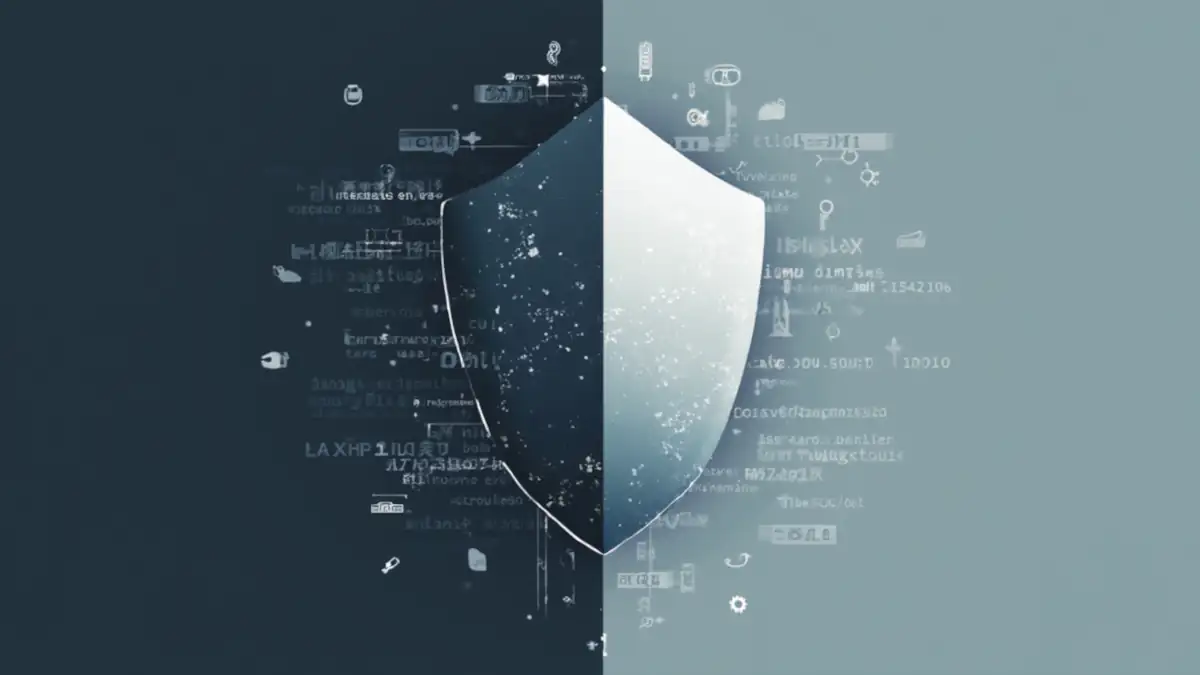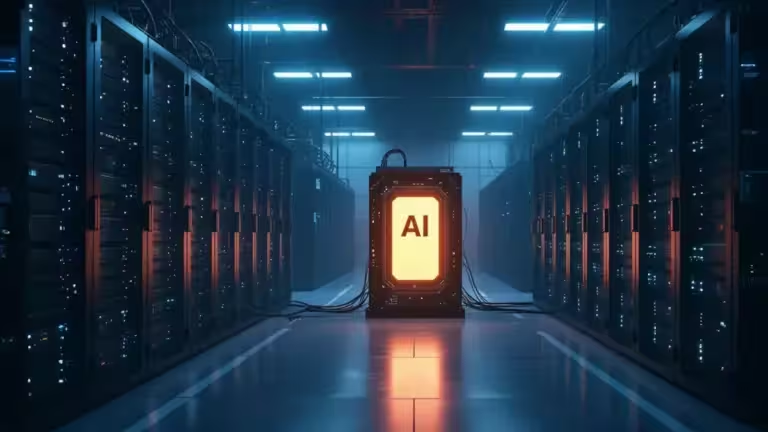Cybersecurity 2025: AI Redefines the Balance Between Threat and Defense

The year 2025 marks a historic turning point for global cybersecurity. Artificial intelligence, once seen as a simple analytical tool, now stands at the heart of an ongoing arms race between hackers and digital defenders. Ransomware spreads faster than ever, deepfakes blur the line between truth and deception, and offensive AI models are sold like regular software on the darknet. Yet the same AI also enables organizations to predict, prevent, and sometimes neutralize attacks before they happen.
In short, AI has become both the problem and the solution.
Read the main article European Cybersecurity 2025: Toward a Unified Defense in the Age of Generative AI for a comprehensive look at how Europe is building a stronger, more coordinated digital defense.
2025: A Pivotal Year for Global AI Cybersecurity
Recent data confirms an escalation in cyber threats. The Global Cybersecurity Outlook 2025 from the World Economic Forum reports that over 70% of organizations perceive an increased risk of cyberattacks in 2025, with ransomware remaining the most costly and widespread threat worldwide. (World Economic Forum – Global Cybersecurity Outlook 2025)
According to the CrowdStrike Global Threat Report 2024, the average breakout time of a successful intrusion has dropped to 62 minutes, down from 84 minutes the previous year, showing how rapidly attackers now operate. (CrowdStrike – Global Threat Report 2024)
Cybercriminals no longer focus only on large corporations. SMEs, local governments, and healthcare institutions are now frequent targets.
AI is used to industrialize cybercrime operations:
- automatic generation of convincing phishing emails,
- creation of fake profiles on LinkedIn or X (Twitter),
- exploitation of software vulnerabilities through machine learning.
AI-enhanced phishing campaigns are proliferating, adapting to each target based on writing style, job role, and time zone. Researchers at Unit 42 (Palo Alto Networks) note that artificial intelligence is transforming the very nature of cyberattacks. Generative models produce more credible, personalized, and faster phishing operations, with much higher success rates than traditional attacks. While no official figures have been published, Unit 42 confirms that automated AI-based attack simulations in labs demonstrated significantly improved efficiency for writing, translation, and customization of malicious content. (Palo Alto Networks – Unit 42 Agentic AI Framework)
But AI is not only a weapon for cybercriminals.
Artificial Intelligence: The Double-Edged Sword of Cybersecurity
Offensive AI: The Automation of Digital Chaos
Darknet forums are now filled with offensive AI models capable of writing malware, bypassing antivirus systems, and creating realistic social engineering scripts on demand.
According to Check Point Research, generative AI tools such as FraudGPT or WormGPT circulate on dark web marketplaces, sold as subscription-based services. These models enable users to craft phishing emails, generate malicious code, and design fake media content.
While Check Point does not list exact prices, independent investigations mention monthly subscriptions ranging from a few dozen to several hundred dollars, depending on features. (Check Point Research – Generative AI and Cybercrime)
This marks a major evolution: the industrialization of cybercrime, where artificial intelligence becomes an accessible service even for users with little technical skill.
Ransomware-as-a-Service (RaaS) operations also leverage generative AI models, resulting in faster, more targeted, and nearly indistinguishable attacks from human actions.
By 2025, the line between human hackers and AI-assisted attackers is blurring. Reports from Microsoft Security Intelligence and other cybersecurity teams show that some campaigns now use AI to obfuscate code, customize payloads, and adapt intrusion methods in real time to bypass traditional defenses. This doesn’t mean fully autonomous AI-led intrusions are happening yet, but it demonstrates that AI actively supports automation and concealment, forming a type of “intelligent cyber camouflage.” (Microsoft Security Intelligence – AI and Cyber Threats 2025) (The Hacker News – AI used to evade detection)
Defensive AI: The Algorithmic Response
In response, companies and governments are deploying AI-driven defense systems. Tools like Trend Cybertron, CrowdStrike THR 2025, or Thales CyberBoost AI use behavioral learning to continuously analyze network behavior and flag anomalies.
The Zero Trust model, now standard across Europe, assumes that no one is trustworthy by default, not even inside the corporate network. Every action is evaluated by AI in real time: suspicious login, unusual transfer, or nighttime access can instantly trigger alerts or automatic lockdowns.
The objective is clear: shift from reactive cybersecurity to predictive security, where threats are anticipated before they strike.
Top 5 AI Cyber Threats in 2025 and Their Countermeasures
| AI Threat 2025 | Example | AI Countermeasure | Verified Source |
|---|---|---|---|
| AI-Generated Phishing | Personalized phishing emails mimicking tone and language of the target | Trend Cybertron – predictive threat modeling | Trend Micro – AI Threat Report 2025 |
| Ransomware-as-a-Service | Coordinated ransomware attacks on European critical infrastructures (airports, energy) | AI-powered EDR + Zero Trust | ENISA Threat Landscape 2025 / Reuters – Sept 22, 2025 |
| Identity Deepfakes | Banking fraud and identity theft through AI-generated videos | Behavioral Analytics (UEBA) | WEF – Global Cybersecurity Outlook 2025 |
| Adaptive Bots | AI bots used for e-commerce fraud and CAPTCHA evasion | DataDome AI – behavioral anti-bot system | DataDome – AI Bot Defense 2025 / Gartner 2025 |
| Internal AI Threats | Uncontrolled use of AI tools within SaaS applications (“Shadow AI”) | UEBA + real-time monitoring | CrowdStrike – Global Threat Report 2025 |
These examples illustrate the new symmetry between AI-powered attacks and AI-driven defenses. Cybercriminals use generative AI to scale phishing, ransomware, and automated fraud, while enterprises deploy predictive models, UEBA systems, and Zero Trust architectures to counter them in real time.
This constant duel between offensive and defensive AI now defines the essence of predictive cybersecurity, where speed of analysis and data quality are the ultimate weapons of resilience.
The Global Rise of Predictive Cybersecurity
The trend in 2025 is clear: predictive cybersecurity is becoming the new standard. It relies on three pillars:
- Behavioral detection (analyzing “normal” to detect anomalies),
- AI correlation (linking weak signals across systems),
- Automated response (neutralizing threats without human intervention).
Companies like Google Mandiant, IBM Security, and SentinelOne are investing in systems that orchestrate autonomous responses, isolating machines, cutting access, or rewriting firewall rules automatically.
In France, Orange Cyberdefense promotes its Managed Detection & Response solutions and its Micro-SOC network, designed to drastically shorten detection-to-response times, though without publishing official figures. (Orange Business – Micro-SOC) / (Orange Cyberdefense – Detect & Respond)
At the European level, the Cyber Solidarity Act, adopted in 2025, introduces a European Cybersecurity Alert System — a network of interconnected SOCs aimed at improving threat detection and coordinated response across the continent. This initiative reflects the EU’s ambition to build a collective AI-powered defense infrastructure based on cross-border cooperation. (European Commission – Cyber Solidarity Act)
AI also enables a macroscopic view of global threats. By combining data from thousands of organizations, algorithms can identify attack patterns before they hit new regions. This marks the rise of a collective digital intelligence.
Global AI Cybersecurity Governance
Governments are now racing to regulate this technological arms race. In Europe, the AI Act introduces from 2025 new transparency and safety standards for all AI systems used in critical sectors. In the United States, the NIST AI Risk Management Framework defines similar best practices. China’s AI Security Law 2025 enforces certification rules for AI models deployed in sensitive industries.
This international alignment aims to prevent an “AI Wild West” scenario where anyone could deploy powerful models without oversight.
Yet, experts from the World Economic Forum warn that regulation alone is not enough. The real key lies in collaboration between researchers, companies, and governments. Artificial intelligence is a neutral weapon — its impact depends entirely on who controls it and how it is trained.
Toward Autonomous and Distributed Cybersecurity
The future is already taking shape: cybersecurity will no longer be centralized but distributed. Local AI systems, integrated into servers, routers, and IoT devices, will act in real time, without relying on a human or cloud-based decision center. These so-called edge defense architectures will allow every device to actively contribute to a network’s collective protection.
Open-source projects like Open-R1 are experimenting with new forms of collaborative learning among AI agents. Others, such as ROMA Search, focus on multi-source verification and transparent reasoning, which are crucial to making AI-based cybersecurity analysis both reliable and auditable.
Conclusion: AI, the Beating Heart of Modern Cybersecurity
In 2025, AI-assisted cybersecurity is no longer optional — it is essential. Between the automation of attacks and the emergence of AI-driven defensive systems, artificial intelligence has become both a catalyst for risk and a cornerstone of protection.
The digital world now stands in a fragile balance, where human vigilance, cross-sector collaboration, and algorithmic transparency define the new pillars of resilience.
Tomorrow’s question will no longer be “Are we protected?” but rather “Can our systems learn to protect themselves?”
Your comments enrich our articles, so don’t hesitate to share your thoughts! Sharing on social media helps us a lot. Thank you for your support!






